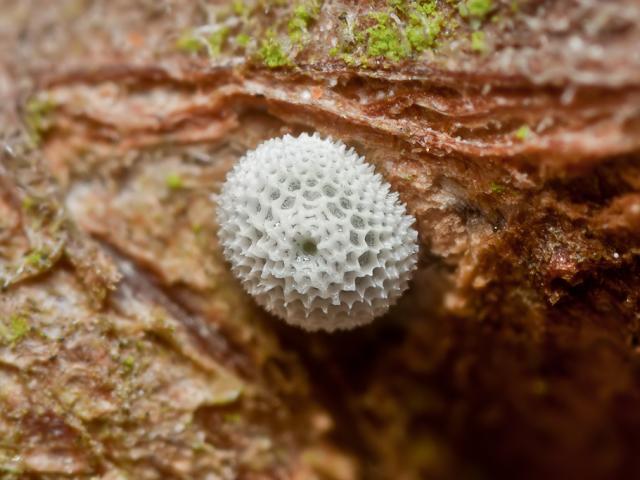Butterflies and sunshine are as synonymous as polar bears and snow. Think of butterflies and you are instantly transported to a summer’s day. In the UK we are lucky if we get more than a few weeks each year when we can enjoy butterflies, blue skies and colourful flowers. Seeing a butterfly before April and after September is an unusual occurrence. So where do our butterflies disappear to when it is too cold and wet for them to be able to fly?
Different butterflies overwinter in different stages of their life cycle. Of the species native to the UK, nine spend the coldest months as an egg; 31 spend it as a caterpillar; 11 as a chrysalis; and five remain in adult form. The Speckled Wood is unique in its ability to survive the winter as either a chrysalis or a caterpillar.
Most species will time egg-laying so that their caterpillars hatch before temperatures plummet. Caterpillars will lie dormant - often burying themselves underground or in amongst leaf litter until spring. If you see a caterpillar aboveground in February, it has most likely emerged from hibernation to look for somewhere to pupate.
 Of those species that spend the coldest months as a chrysalis, most will pupate at the base of plants, close to the ground or hidden in fallen leaves. Commonly a chrysalis will be carefully camouflaged with its surroundings and many will vary over the months they spend in this form.
Of those species that spend the coldest months as a chrysalis, most will pupate at the base of plants, close to the ground or hidden in fallen leaves. Commonly a chrysalis will be carefully camouflaged with its surroundings and many will vary over the months they spend in this form.
The pupa of an Orange-tip will start off green, to match the foliage of late summer, then turn brown like autumn leaves. Some of the least well disguised chrysalises are those of the Large and Small White butterflies whose caterpillars climb up walls and fences, commonly pupating in cracks in brickwork, under window sills or around doorframes.
Butterfly eggs are never bigger than a few millimetres wide. This makes them difficult to detect but they can be found if you know the foodplant of the species.

The Brown Hairstreak butterfly lays its eggs on Blackthorn at the end of August and will remain in this form until the caterpillars hatch in May and eat the newly grown leaves of the plant. Their anemone-shaped eggs are often easier to spot than the adult butterflies, which spend most of their lives high up in the tree-tops.
Peacock, Red Admiral, Small Tortoiseshell, Comma and Brimstone spend the winter in their adult form. These butterflies will tuck themselves away in outbuilding crevices, log piles or evergreen vegetation and spend the coldest days in a dormant state.

It's not a total hibernation as the winter sun can sometimes warm them enough to wake them. If you see a butterfly at this time of year it is most likely that they will be looking for something to eat before resuming their sleepy state.
Occasionally butterflies will venture indoors for shelter. If you find one in your house the kindest thing you can do is release it, or move it to your shed or garage, where it won't get confused by central heating and can wait out the winter to emerge at the right time for spring flowers and potential mates.
The mild temperatures this January have resulted in six different species being spotted already this year. Although seeing a butterfly is always a delight, let’s hope the majority of butterflies are still tucked away somewhere safe waiting for a more suitable time to spread their wings. They face enough problems finding food and breeding habitat in our ever-developing landscape so they really need to hang on in there for some sunshine to maximise their chances of survival.
Catrin Hollingum


